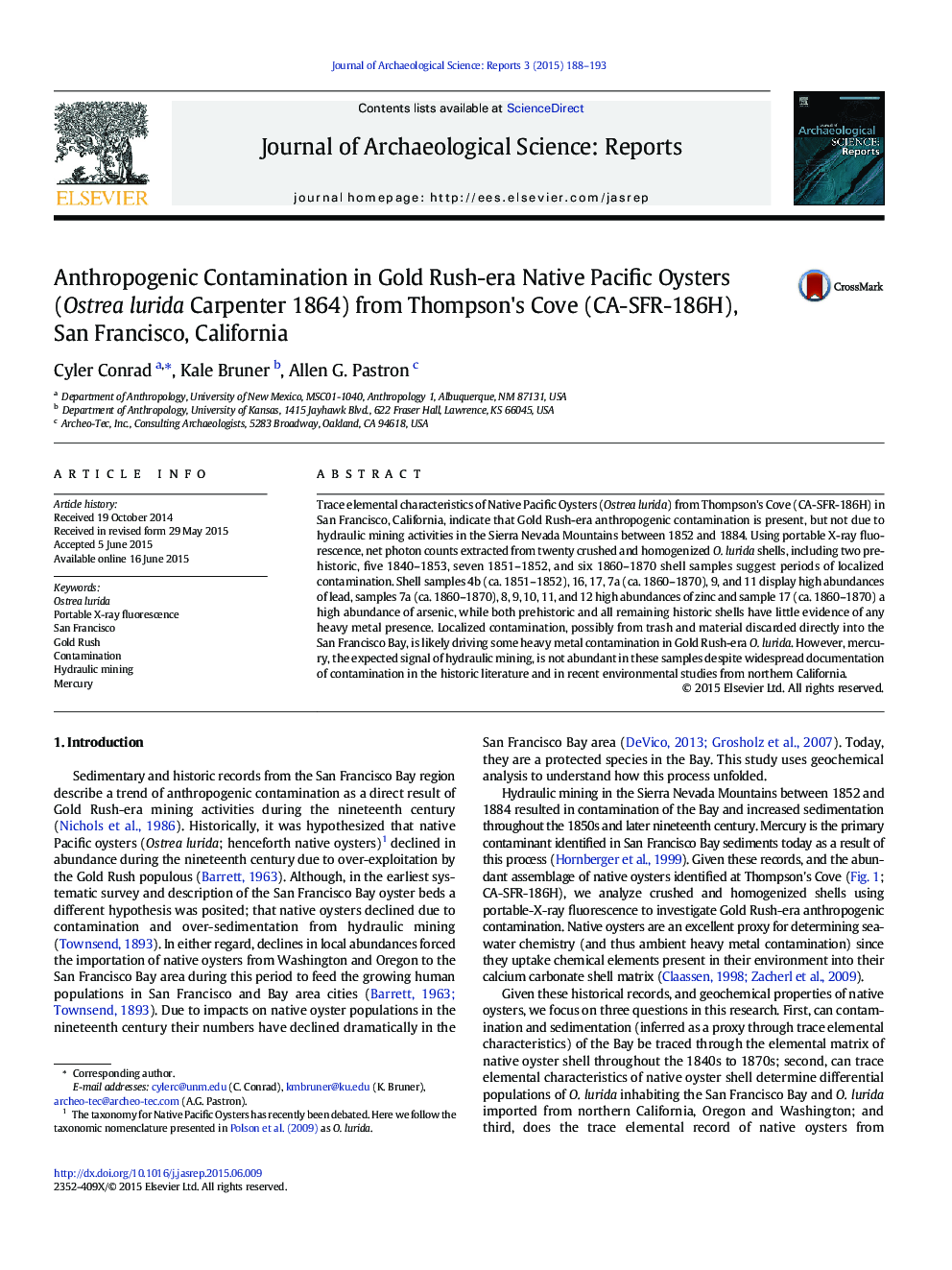| Article ID | Journal | Published Year | Pages | File Type |
|---|---|---|---|---|
| 7446207 | Journal of Archaeological Science: Reports | 2015 | 6 Pages |
Abstract
Trace elemental characteristics of Native Pacific Oysters (Ostrea lurida) from Thompson's Cove (CA-SFR-186H) in San Francisco, California, indicate that Gold Rush-era anthropogenic contamination is present, but not due to hydraulic mining activities in the Sierra Nevada Mountains between 1852 and 1884. Using portable X-ray fluorescence, net photon counts extracted from twenty crushed and homogenized O. lurida shells, including two prehistoric, five 1840-1853, seven 1851-1852, and six 1860-1870 shell samples suggest periods of localized contamination. Shell samples 4b (ca. 1851-1852), 16, 17, 7a (ca. 1860-1870), 9, and 11 display high abundances of lead, samples 7a (ca. 1860-1870), 8, 9, 10, 11, and 12 high abundances of zinc and sample 17 (ca. 1860-1870) a high abundance of arsenic, while both prehistoric and all remaining historic shells have little evidence of any heavy metal presence. Localized contamination, possibly from trash and material discarded directly into the San Francisco Bay, is likely driving some heavy metal contamination in Gold Rush-era O. lurida. However, mercury, the expected signal of hydraulic mining, is not abundant in these samples despite widespread documentation of contamination in the historic literature and in recent environmental studies from northern California.
Related Topics
Social Sciences and Humanities
Arts and Humanities
History
Authors
Cyler Conrad, Kale Bruner, Allen G. Pastron,
